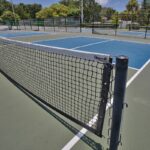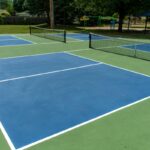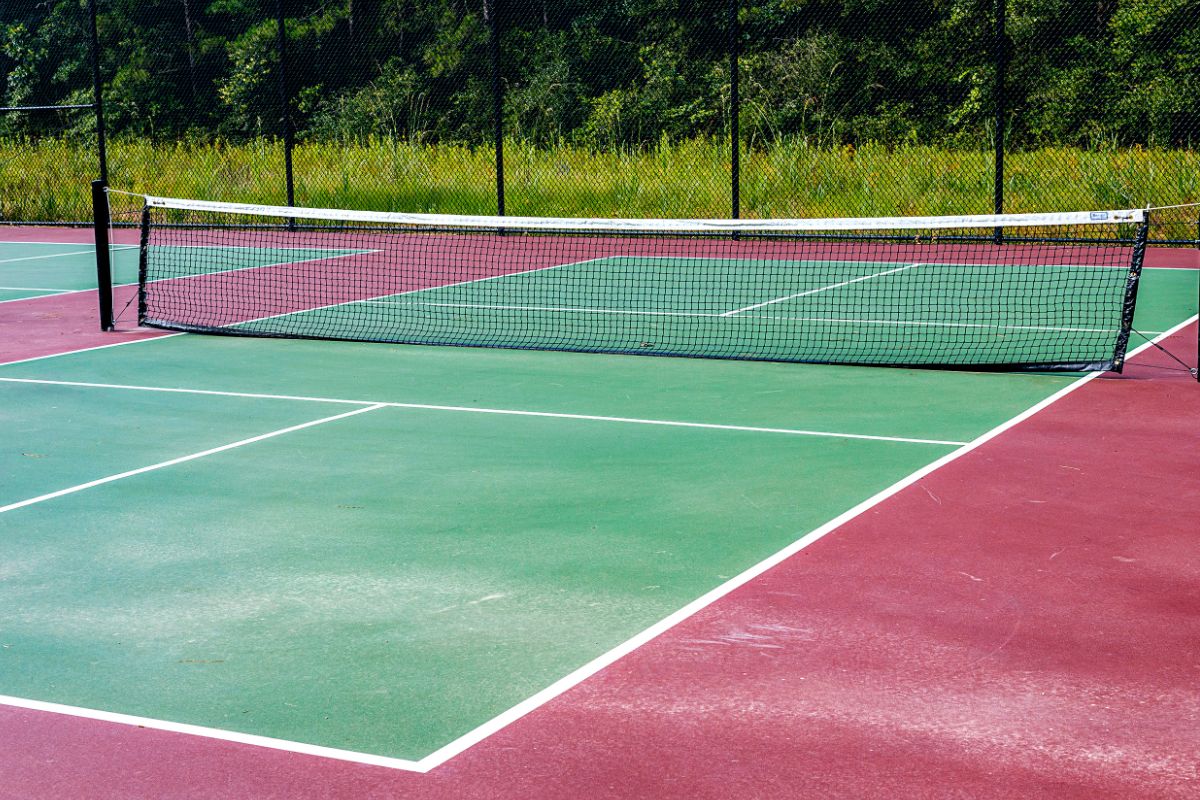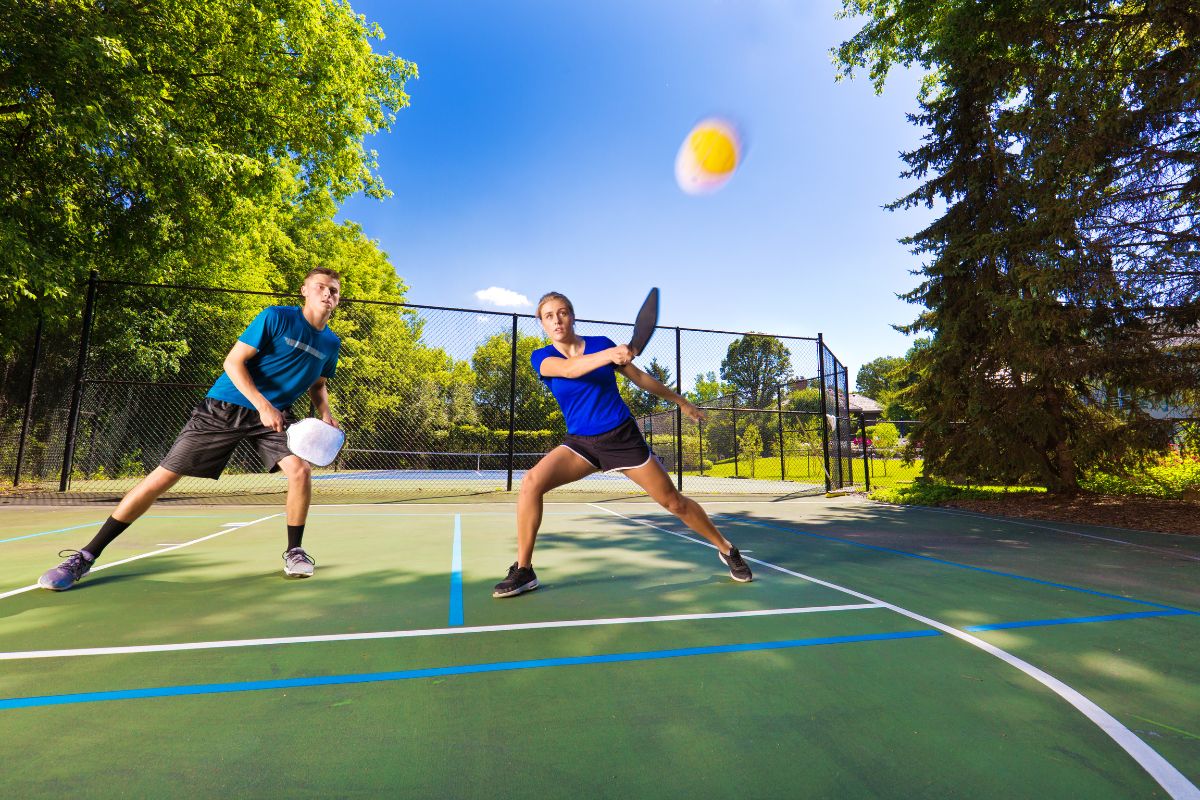While getting the hang of the basics in pickleball won’t take you too long after you’ve played a few games, you will quickly pick up on different unique strategies that many teams like to deploy in order to secure the win.
It’s important for any player, no matter whether they are a beginner or advanced, to know about these strategies since it can help to expand their skill ceiling and make them more aware of how to counter their opposition when they are stacking, or even how to use the technique for themselves.
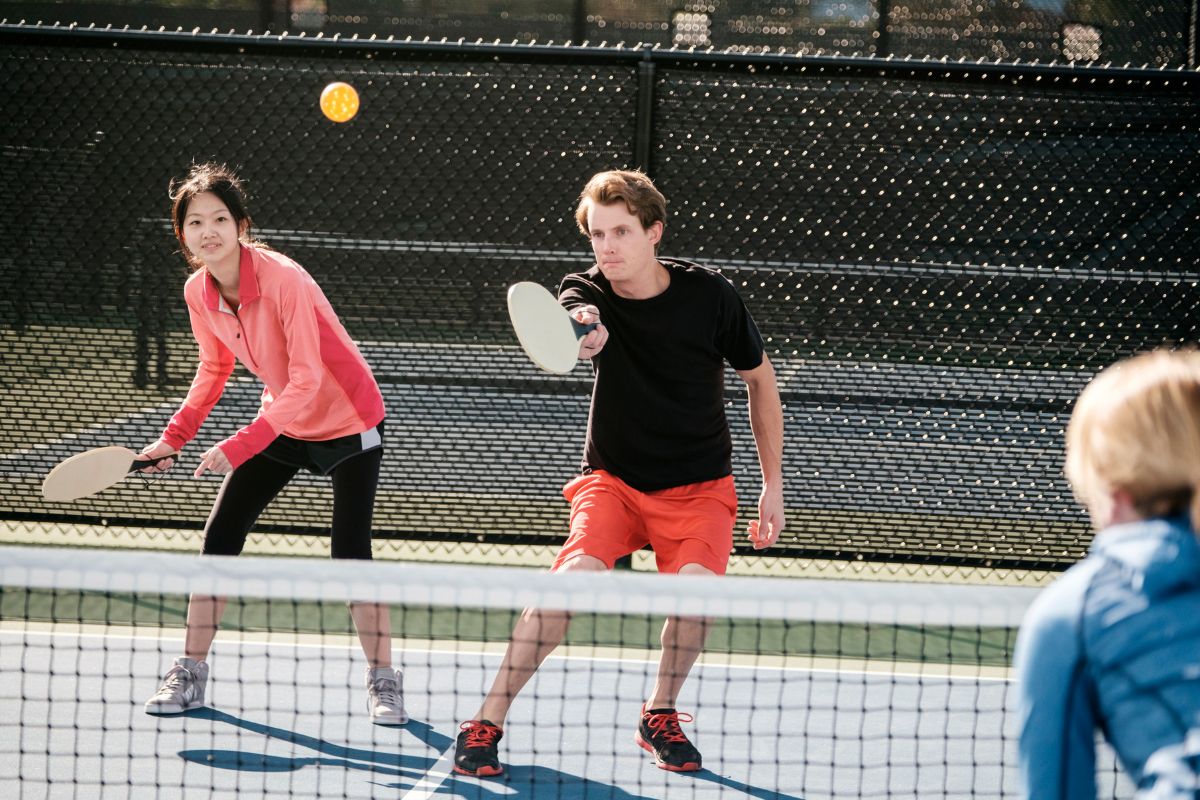
Here is all you need to know about stacking including how it works, why people use it, and how effective it really is in a match.
What Does Stacking Mean In Pickleball?
Stacking is a technique that can only be used in a doubles game and refers to when two players are lined up on the same side of the court while either returning or making a serve, therefore ‘stacking’ the one side before moving to their preferred side of the court once the ball has been hit.
This means a pair won’t be in their traditional positions once the game starts and instead, will only start moving across the court once the serve or the return is hit.
There are no rules that dictate which side of the court you can stand on, making this a very common and completely legal technique as long as the correct server is still serving from the correct position, for example, the server cannot have any foot on or inside the line when they are serving the ball.
Benefits Of Stacking
One of the major reasons teams will decide to stack in pickleball is to make up for potential weaknesses.
For example, if a player is struggling with their preferred hand on either side of the court, stacking can be used to allow them to keep both forehands in the middle of the court and allows for more forehand poaching opportunities.
Stacking can also cover both players’ weaknesses by making use of their mobility.
If the more agile player stays on the side closer to the center of the court while the player more efficient at catching overheads stays at the far side, this allows you to cover all bases and assist each other by playing to your strengths.
Stacking will therefore be used to cover both or a single player’s weaknesses, while also increasing the number of forehands and backhands in the middle of the court.

How To Stack (Serving And Returning)
The traditional positions when serving would see both players taking up their own space on the left and right side of the court in order to be prepared for the anticipated return hit, however when stacking, you will want to be much closer together on either side of the court before you serve, or when you are preparing to a return an oncoming serve.
When your team is serving, then it is usually more ideal for the person actually hitting the ball to be the one closer to the center of the court.
This is so that they can have as much space as possible when trying to hit the ball, aswell as making it much easier to start spreading out to your preferred areas once the ball is struck.
Stacking when on return can look slightly different, but still serves the same purpose and possesses the same benefits and advantages as serving.
When stacking to prepare for a serve, both players will again be on the same side of the court but rather than being side by side, the returning player will be at the baseline while the non-returning player remains next to the kitchen line.
In this way, the person closest to the net will actually be standing just outside of the court itself.
This is completely legal as the official rules of pickleball state that as long as the correct returner is returning from the correct side, their partner can stand anywhere on the court.
This gives the player on the court much more space and freedom to return the ball, and when the return is made, the returner will then subtly move to the side next to them while the player off-court will then move back onto the side they are closest to.
What Is A Switch Stack?
A switch stack is a little different from the traditional stack method and is a technique designed to throw the opponent off by tricking them into thinking you intend to stay on one side after a serve when you are really going to move to another.
To switch stack, both players will stand in their own ad and deuce areas of the court, but as soon as the serve is made and the ball leaves the racket, both players will move to the opposite side and switch positions, ready to return the ball.
The reason this works so well as an advanced technique is because many players, especially those with more experience, will try to return the ball to a player they think would struggle to return their serve, or who they have been catching out throughout the game.
By switching positions, the serving team can trick the opposition, causing them to hit the ball to the ‘weaker’ player, only for their teammate to appear there instead after the serve has been made.
This technique takes a lot of practice to get good at and master since it requires very good reflexes and the ability to keep your eye on the ball and be prepared for a swing even while you’re shuffling across.
It’s also vital when executing a stacked shuffle that you know which player will shuffle across from in front and from behind, otherwise, you can end up bumping into each other during the process.
Summary
Stacking is a very common technique in pickleball that is usually reserved for more advanced players, however, it’s a fantastic way to make up for any potential weaknesses and a great method of throwing your opponent off their game.
- What Kind Of Ball Is Used In Pickleball? - July 13, 2023
- How Much Does It Cost To Build A Pickleball Court? - July 11, 2023
- When Do New Pickleball Rules Take Effect? - July 8, 2023

